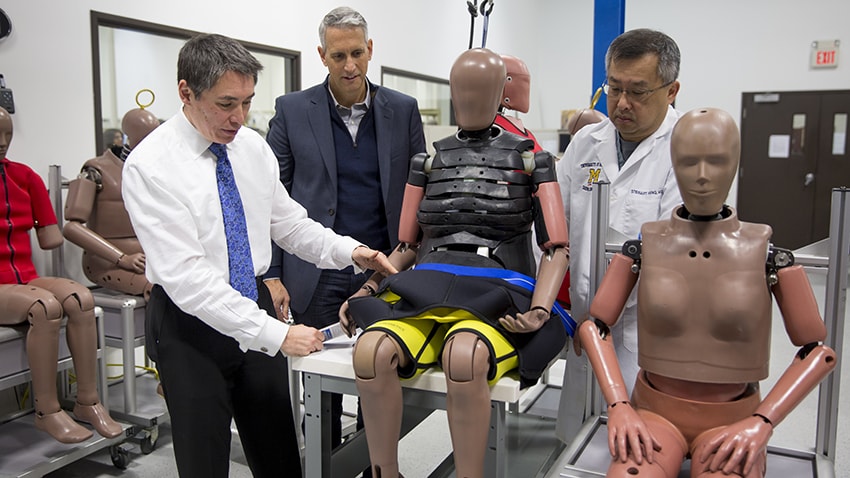

Have you ever looked at a crash-test dummy and thought, “Where does he get the time to hit the gym?” In fact, the standard dummy—young, male, and by modern standards, extremely svelte—don’t much reflect the population they’re supposed to represent, and as Americans as a population get older and, yes, fatter, work is being done to bring the mannequins into line.
Most automotive dummies were developed almost 50 years ago, and what was considered a “50th-percentile male”—basically, an average dude—at the time is today far too thin to be representative. After Michigan Medicine trauma surgeon Stewart Wang, M.D. told automotive safety engineers that crash-test dummies “look nothing like” his patients, dummy manufacturers such as Humanetics have been working on developing updated models based on medical and imaging data.

One such update is based on the anatomical particulars of an average 70-year-old female. Another, built to reflect the current reality of mass obesity, is a 273-pound model that’s 106 pounds heavier than the traditional male crash dummy. Given an obese person’s large upper-body mass, the threat of “submarining” under the lap belt is increased; a 2013 study by the University of California, Berkeley found that obese drivers are up to 78 percent more likely to die in automotive impacts.
“The typical patient today is overweight or obese—they’re the rule rather than the exception,” Wang notes, according to Michigan Health Lab.